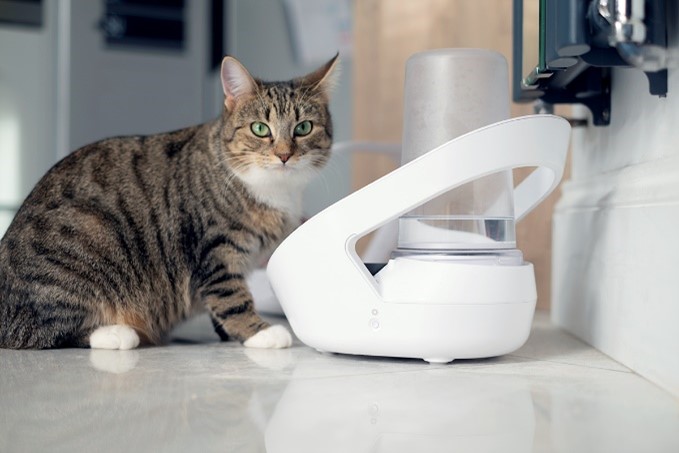
Pet Diabetes: Know the early signs to better manage your pets’ health
Like people, dogs and cats can be diagnosed with diabetes. Estimated to affect at least one in 200 catsi and one in 300 dogsii, diabetes mellitus is one of the most common endocrine disorders in pets.

Diabetes mellitus in dogs and cats results from a shortage of insulin in their bodies. When your pet’s body produces little or no insulin, or if it cannot be used properly, glucose (sugar) builds up in the blood instead of being used for fuel.
Diabetes in dogs is similar to type 1 diabetes in humans and typically has an onset in middle age or older (7 to 10 years of age). Diabetes in cats is similar to type 2 diabetes in humans and typically occurs later in life but can be seen in cats aged 6 years and older. iii
Risk factors for diabetes include age, breed, certain diseases and treatments, genetics and obesity (in cats). i-iv
It is critical for family members to learn how to care for pets with diabetes. The first step is identification and diagnosis.

Potential Signs
Potential signs that a pet might have diabetes include the following: iii, iv
- Increased thirst
- Increased urination
- Altered appetite – this can be increased, but animals that don’t feel well may not want to eat
- Weight loss despite a good appetite
- Altered mood (depression) or activity (tired)
“If you see any of these signs, discuss this with your veterinarian,” says Linda Horspool, BVMS, PhD, DipECVPT, MRCVS, director, Global Scientific Marketing Affairs, Merck Animal Health. “By working together, pet owners can successfully manage their pet’s diabetes, helping their dog or cat to live a happy, healthy life.”
Disease Management
Pet diabetes is lifelong in most dogs and cats once diagnosed but can be managed successfully through a daily routine that includes a healthy diet (special prescription diets are often recommended), regular exercise, and insulin treatment as well as monitoring.

Concurrent disease, such as pancreatitis in dogs and chronic kidney disease in cats, as well as advanced age can make managing diabetes challenging. Examples of complications that can develop in pets include cloudy eyes due to cataracts in dogs and weak back legs due to neuropathy in cats.iii,iv
Helpful tools
Diabetes management now includes digital tools that help monitor and track key biological information like activity levels, calories burned, behavior and food and water intake in pets.

Merck Animal Health’s technology products for pets can help pet owners manage both healthy pets as well as those with diabetes. These include pet doors, pet feeders, activity and behavior monitoring devices (for dogs) and water delivery and drinking monitoring system (for cats). These devices collect relevant data and display trends graphically via a smartphone app to help pet owners better understand their pets’ activities.
Our free Pet Diabetes Tracker app can help pet owners stay on top of daily monitoring and treatment by providing reminders to give insulin injections and order repeat prescriptions, as well as allowing bio data, such as blood sugar levels, body condition and body weight to be entered. The app can also be used to set reminders for medication schedules and vet appointments, and to create reports that can be shared directly with the vet by email.

Download the app through the AppStore or Google Play.
“As veterinarians and pet owners ourselves, we understand that our dogs and cats are important members of our families and their health and well-being are our top priority,” remarks Dr. Horspool. “We are committed to providing pet owners with resources to properly care for their pets, especially those living with chronic health conditions like diabetes.”
Pet Diabetes Month
November is Pet Diabetes Month and the perfect time to become educated about what to look for in your pets as they age.
In 2007, our company founded Pet Diabetes Month to improve awareness of pet diabetes and since then has worked diligently to increase awareness of this condition by providing education and support for pet owners.

For additional information, check out the following tools and resources about pet diabetes:
- For dogs visit https://www.caninsulin.com/dogs
- For cats visit https://www.caninsulin.com/cats
Click here to learn more about Merck Animal Health’s innovations to help maintain and improve companion animal health.
References
i O’Neill DG, Gostelow R, Orme C et al. J Vet Intern Med. 2016;30:964-972.
ii Mattin M, O’Neill D, Church D et al. Vet Rec. 2014;174:349.
iiiSparkes AH, Cannon M, Church D et al. J Feline Med Surg. 2015;17:235-250.
iv Behrend E, Holford A, Lathan P et al. J Am Anim Hosp Assoc. 2018;54:1-21. Available at American Animal Hospital Association www.aaha.org/aaha-guideinelines/diabetes management
